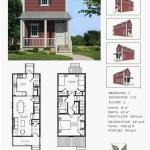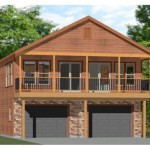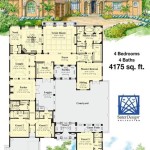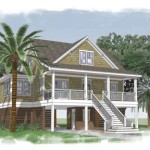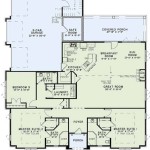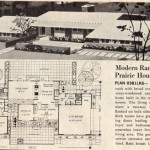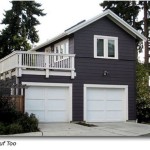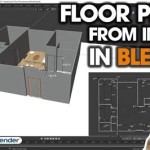Floor Plans for Multi-Family Homes: Optimizing Space and Functionality
Multi-family homes, encompassing duplexes, townhouses, apartment buildings, and other residential structures designed to house multiple independent living units, present unique considerations in architectural design. Effective floor plan design is crucial for maximizing occupancy, ensuring privacy, and fostering a comfortable living environment for all residents. Understanding the principles and strategies involved in creating efficient and desirable floor plans is paramount for developers, architects, and property owners alike.
Several factors influence the selection and customization of floor plans for multi-family dwellings. These include zoning regulations, local building codes, target demographic, budget constraints, and the overall architectural style desired. A well-conceived floor plan not only optimizes space utilization but also contributes significantly to the property's marketability and long-term value.
Key Considerations in Multi-Family Floor Plan Design
Designing floor plans for multi-family homes requires a balanced approach that addresses both individual unit needs and the overall building structure. Designers must consider several key factors to create functional, aesthetically pleasing, and marketable units.
1. Space Efficiency and Unit Mix: The ratio of different unit types (studios, one-bedroom, two-bedroom, etc.) is a critical decision. Market research should inform this decision, identifying the most in-demand unit types within the target demographic. For instance, if the target market consists primarily of young professionals or students, smaller, more affordable units (studios or one-bedroom apartments) may be more desirable. Conversely, if the target market includes families, larger units with multiple bedrooms and bathrooms will be necessary.
Space efficiency is also paramount. Compact layouts should maximize usable square footage, minimizing wasted space in hallways or oversized common areas. Innovative storage solutions, such as built-in shelving and multi-functional furniture, can further enhance the perceived size and usability of the unit. Open-concept layouts, particularly in living and dining areas, can create a sense of spaciousness even in smaller units. Attention to detail in furniture placement and traffic flow is essential for ensuring a comfortable and functional living environment.
2. Privacy and Noise Reduction: A fundamental aspect of multi-family living is ensuring adequate privacy for each resident. Floor plan design plays a crucial role in minimizing noise transmission between units. Strategies to mitigate noise include strategic placement of bedrooms away from common areas, using sound-dampening materials in walls and flooring, and incorporating buffer zones such as closets or bathrooms between adjacent units.
The orientation of windows and balconies can also impact privacy. Careful consideration should be given to sightlines between units, particularly on upper floors. Landscaping can also be used to create visual barriers and enhance privacy for ground-floor units. Soundproof windows and doors can further reduce noise penetration from external sources.
3. Accessibility and Universal Design: Adherence to accessibility standards, such as the Americans with Disabilities Act (ADA), is legally mandated for certain multi-family housing projects. However, even beyond legal requirements, incorporating principles of universal design benefits all residents, regardless of age or ability.
Universal design features include wider doorways and hallways, accessible bathrooms with grab bars, and lever-style door handles. Ramps or elevators should provide access to all levels of the building. Kitchens should be designed with adjustable-height countertops and accessible appliance controls. Implementing these features not only ensures compliance but also promotes inclusivity and enhances the marketability of the property to a wider range of potential tenants.
Common Multi-Family Home Floor Plan Types
Various floor plan configurations are commonly employed in multi-family home construction, each with its own advantages and disadvantages. The optimal choice depends on site constraints, budget considerations, and the desired aesthetic.
1. Linear Apartment Buildings: This is one of the most common configurations, particularly for apartment buildings. Units are arranged along a central corridor, providing access to each apartment. This layout is relatively simple to construct and offers efficient use of space. However, it can sometimes result in limited natural light penetration for units located in the center of the building. Effective ventilation and lighting strategies are crucial to overcome this challenge.
Variations of the linear apartment building include double-loaded corridors, where units are located on both sides of the corridor, and single-loaded corridors, where units are located on only one side. Single-loaded corridors often provide better natural light and ventilation but can be less space-efficient.
2. Townhouse-Style Units: Townhouses offer a sense of individual homeownership within a multi-family setting. Units typically span multiple floors and have their own private entrances. This configuration provides greater privacy and noise isolation compared to apartment-style units. Townhouses are often arranged in rows or clusters, sharing common walls but maintaining distinct identities.
Townhouse floor plans often include features such as private patios or balconies, attached garages, and dedicated laundry areas. They are particularly appealing to families seeking a more traditional housing experience without the responsibilities of full homeownership.
3. Garden-Style Apartments: These apartments are typically located in low-rise buildings with landscaped grounds and courtyards. The emphasis is on creating a park-like setting with ample green space. Garden-style apartments often feature patios or balconies that overlook the landscaped areas. This layout can create a more relaxed and community-oriented living environment.
Floor plans in garden-style apartments often prioritize natural light and ventilation. Units may be arranged around a central courtyard or feature multiple exposures to allow for cross-ventilation. The abundance of green space can also contribute to a more tranquil and aesthetically pleasing living experience.
Specific Room Considerations within Multi-Family Units
Beyond the overall floor plan configuration, specific room layouts within each unit require careful attention to detail. The kitchen, bathroom, and bedroom are particularly important areas to optimize for functionality and comfort.
1. Kitchen Design: Kitchens in multi-family units should be designed for efficiency and durability. Compact layouts are often necessary due to space constraints. Galley kitchens, L-shaped kitchens, and U-shaped kitchens are common choices, depending on the available space. The work triangle principle, which focuses on the relationship between the sink, refrigerator, and stove, should be considered to optimize workflow.
Durable and easy-to-clean materials are essential for kitchen surfaces. Quartz countertops, stainless steel appliances, and vinyl or tile flooring are popular choices. Adequate storage space, including cabinets, drawers, and pantries, is crucial for keeping the kitchen organized and functional.
2. Bathroom Design: Bathrooms in multi-family units should be designed for both functionality and aesthetics. Space-saving fixtures, such as wall-mounted toilets and corner sinks, can maximize usable space in smaller bathrooms. Walk-in showers are becoming increasingly popular, particularly for accessible units.
Adequate ventilation is essential to prevent moisture buildup and mold growth. Exhaust fans should be installed in all bathrooms. Durable and water-resistant materials, such as ceramic tile or vinyl flooring, are crucial for bathroom surfaces. Sufficient lighting, including both ambient and task lighting, is important for creating a comfortable and functional bathroom environment.
3. Bedroom Design: Bedrooms should be designed as private and relaxing spaces. Adequate closet space is essential for storage. The placement of windows should allow for natural light and ventilation while maintaining privacy. The size of the bedroom should be sufficient to accommodate a bed, dresser, and other essential furniture.
The orientation of the bedroom within the unit can also impact its comfort. Bedrooms should ideally be located away from noisy areas, such as common areas or busy streets. Soundproofing measures, such as insulated walls and windows, can further enhance the tranquility of the bedroom.
Designing effective floor plans for multi-family homes requires a multifaceted approach that considers space efficiency, privacy, accessibility, and aesthetics. By carefully considering these factors, developers and architects can create desirable living spaces that attract tenants and enhance the value of the property. Understanding the different floor plan types and specific room considerations is essential for creating functional and marketable multi-family dwellings.

Multi Family House Plan Not A Fan Of The Dated Exterior But I Like Concept Plans Duplex

6 Unit Modern Multi Family Home Plan 21603dr Architectural Designs House Plans

Fordyce Crest Multi Family Home House Plans Duplex Floor And More

Plan 69111am Hillside Multi Family Home In 2024 House Plans Homes

Multi Family Plan 6865

Multi Family Plan 64952 Victorian Style With 7624 Sq Ft 16 Bed

Multi Family Plan 73483 Ranch Style With 3433 Sq Ft 5 Bed 3 B

Duplex House Plans Multi Family Living At Its Best Dfd Blog

Multi Family Duplex House Plans 8 Bedroom Home Modern

House Plan 408 Brookshire Multi Family
Related Posts

